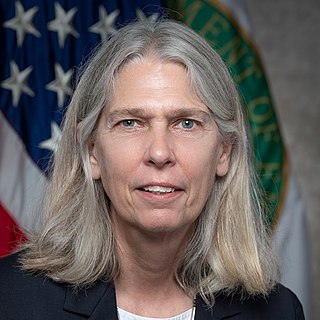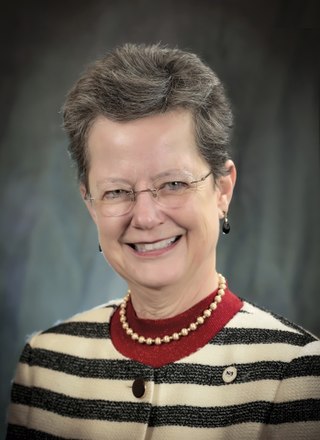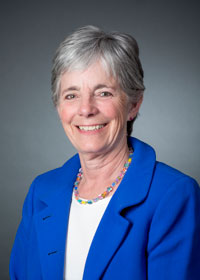Related Research Articles

Patricia Lewis is a British and Irish nuclear physicist and arms control expert, who is currently the Research Director for International Security at Chatham House. She is also currently Co-Director of the Global Commission on Internet Governance. She was previously the Senior Scientist-in-Residence and Deputy Director at the James Martin Center for Nonproliferation Studies at Monterey Institute of International Studies (MIIS). She was previously the Director of the United Nations Institute for Disarmament Research (UNIDIR) and the Director of VERTIC.
Peter D. Zimmerman was an American nuclear physicist, arms control expert, and former Chief Scientist of the Senate Foreign Relations Committee. At his death, he was Emeritus Professor of Science and Security at King's College London. He retired from the college in August 2008 and was named Professor Emeritus on 1 September of the same year.
Frank N. von Hippel is an American physicist. He is Professor and Co-Director of Program on Science and Global Security at Princeton University and the Princeton School of Public and International Affairs.
Noemie Benczer Koller is a nuclear physicist. She was the first tenured female professor of Rutgers College.
Gary S. Grest is an American computational physicist at Sandia National Laboratories.
Nancy M. O'Fallon Dowdy is an American nuclear physicist who was instrumental in nuclear disarmament negotiations between the U.S. and the Soviet Union after the Cold War. She received her doctorate in physics in 1966. After she developed her career as a nuclear physicist, she turned to politics, where she served as a representative of the United States on a commission for arms control. In 1992 she was nominated by Pres. George H. W. Bush to be Special Representative for Arms Control Negotiation and Disarmament in the aftermath of the Cold War. She has been designated a Fellow of the American Physical Society, in recognition of her role on treaty verification, her research accomplishments and leadership in research, and leadership and service on behalf of women in physics.

Vera Kistiakowsky was an American research physicist, teacher, and arms control activist. She was professor emerita at Massachusetts Institute of Technology in the physics department and Laboratory for Nuclear Science, and was an activist for women's participation in the sciences. Kistiakowsky was an expert in experimental particle physics and observational astrophysics. She was the first woman appointed MIT professor of physics.
Julia Wan-Ping Hsu is an American materials scientist. In her research, she uses scanning probe microscopy to study the nanostructure, optics, and photoelectric properties of thin films and crystal surfaces, with particular application to solar cells, and has used nanotransfer printing to make electrical connections to single-molecule sensing devices. She is a professor of materials science and engineering at the University of Texas at Dallas, where she holds the Texas Instruments Distinguished Chair in Nanoelectronics.
Gerald E. Marsh is a physicist, retired from Argonne National Laboratory, who has worked and published widely in the areas of science, nuclear power, and foreign affairs.
Lisbeth Dagmar Gronlund is an American physicist and nuclear disarmament expert, the former co-director of the Global Security Program for the Union of Concerned Scientists.

Jill M. Hruby is an American mechanical engineer and government official. Since July 26, 2021, Hruby has served as Under Secretary of Energy for Nuclear Security and Administrator of the National Nuclear Security Administration, a post subject to Senate confirmation. Jill Hruby made history as the first woman to ever head a U.S. nuclear weapons lab, serving as director of Sandia National Laboratories from 2015-2017.

Julia Mae Phillips is an American physicist. She began her career in materials research on thin films on semiconductors and has transitioned into leadership roles in science policy. She currently serves on the National Science Board.
Christine Anne Coverdale is an American plasma physicist at Sandia National Laboratories, where she is a Distinguished Member of the Technical Staff.
Aviva Brecher is a Romanian-American applied physicist and transportation scientist who studied magnetic levitation for many years at the John A. Volpe National Transportation Systems Center, a research center of the United States Department of Transportation.
Barbara Suzanne Goss Levi is an American physicist, physics writer, and editor.

Susan Joyce Seestrom is an American experimental nuclear physicist and physics administrator, the Chief Research Officer at Sandia National Laboratories. Before moving to Sandia, she was the first female head of the Physics Division and the Weapons Physics Directorate at the Los Alamos National Laboratory, and she became the first female chair of the Nuclear Science Advisory Committee of the Department of Energy and National Science Foundation. She is known for her research on neutrons and particularly on ultracold neutrons.
Michelle Anna Espy is an American physicist at the Los Alamos National Laboratory who studies ultra-low-field nuclear magnetic resonance magnetic resonance imaging using SQUIDs, with applications including magnetoencephalography and the detection of explosive materials and nerve agents in airline security screening. At Los Alamos, she has also worked on neutron imaging of stockpiled weapons and of the skull of the Bisti Beast, a fossil tyrannosaur.
Stephanie Brooke Hansen is an American plasma physicist whose research applies both computational modeling and spectroscopy to inertial confinement fusion. She is a distinguished member of the technical staff in the inertial confinement fusion target design group at Sandia National Laboratories.

Nicole Marie Lloyd-Ronning is an American computational astrophysicist specializing in gamma-ray bursts and the deaths of massive stars as a researcher at the Los Alamos National Laboratory and lecturer at University of New Mexico–Los Alamos. She is also known for her work in science popularization, as the author of the book Great Mysteries in Astrophysics, as a scientist ambassador for the Bradbury Science Museum, and in youth outreach programs, especially for young people from indigenous groups in the American southwest.
Senta Victoria (Vicki) Greene is an American experimental high-energy physicist, the Stevenson Professor of Physics at Vanderbilt University, where she is also Director of Graduate Studies in physics and Director of Diversity, Equity, and Engagement for the College of Arts and Science. Her research involves the properties of the quark–gluon plasma, and the shapes of jets in heavy ion collisions.
References
- ↑ Birth year from Library of Congress catalog entry, retrieved 2022-01-14
- 1 2 3 "2012 Joseph A. Burton Forum Award Recipient: Arian Pregenzer, Sandia National Laboratories", APS Honors, American Physical Society, retrieved 2022-01-14
- ↑ "B.S. Physics", Alumni directory, University of New Mexico Department of Physics & Astronomy, retrieved 2022-01-14
- ↑ WorldCat catalog entry for Validity of Brownian motion theory of activated processes: Sublimation, retrieved 2022-01-14
- ↑ "Appendix A: Biographical Sketches of Committee Members", Improving the Assessment of the Proliferation Risk of Nuclear Fuel Cycles, National Academies Press, 2013, retrieved 2022-01-14
- ↑ "Fellows nominated in 2012 by the Forum on Physics and Society", APS Fellow archive, American Physical Society, retrieved 2022-01-14
- ↑ Solitaire Springs, New Mexico Land Conservancy, retrieved 2022-01-14